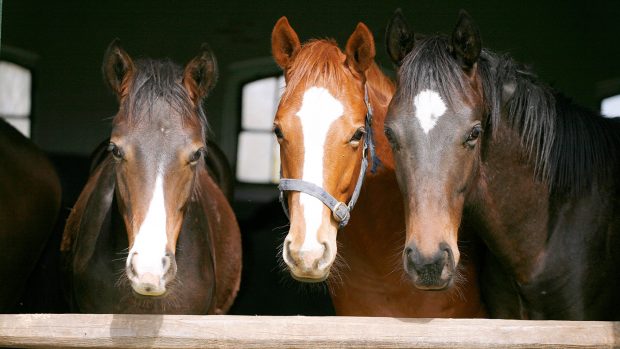Agreeing to ride in a charity race riding a proper racehorse on a famous racecourse is the easy bit. For somebody who has never race-ridden before or perhaps hasn’t done so for a considerable amount of time, the enormity of what you’ve taken on can however start to hit home as race day approaches and the hours of riding out start to take their toll. As H&H’s hunting editor Polly Portwin gears up for the Countryside Alliance Charity Race at Aintree on 23 October, she looks at some of things she has encountered along the way…
1. Saying ‘yes’ before realising you have to find your own horse
Nearly everybody knows somebody who owns a racehorse, or perhaps has a share in one, but persuading somebody to lend their precious – and often valuable – racehorse to a complete novice for a race without any prize money isn’t always the easiest of tasks. Remember though, if you don’t ask, you don’t get so don’t be afraid to get in touch with all your contacts. You will be pleasantly surprised how generous some people can be.
2. Safety standards
Being reminded just how old you are when you dig out your old Pony Club body protector to find it has been out of date in terms of safety standards for getting on for 20 years and was manufactured before most of your work colleagues were born. Having a Velcro strap that does up between the legs is a complete giveaway and if you want to make it out on to the hallowed turf it will need to be upgraded.
3.Tacking up ‘racing-saddle style’
We can all tack up our own horses with our eyes closed so it shouldn’t be difficult. That is until you turn up to ride out for the first time and are given an entire array of gel pads, numnahs, saddle pads, chamois leathers and towels that all have to be put under the flimsy little piece of leather they call a saddle. It’s worth making a point of casually chatting to somebody in a nearby stable as they tack up to get some idea of which order they go in.
4.Getting onto your horse isn’t always easy
Even with ridiculously short stirrups, mounting blocks aren’t always readily available — or easy to find in a strange yard, so practice having a leg-up. In the racing world it’s customary to go on “one” rather than on “three” so be prepared and don’t flop about as whoever is legging you up will expect you to be ready to hop up as your horse is still walking along.
5. Bruises…
You will probably get a few extra bruises and sores on your legs, calves and ankles throughout the training period because of riding with shorter leathers than usual which pinch in all sorts of places. The knees can take a bit of a pounding too, however your thighs will tone up considerably after a while. Every cloud…
6.Riding out in all weathers
This may not differ much to riding out your own horse until after getting soaked through on your third lot up the gallops, you realise you still have your own horse to do as well. And the mucking out…
7. The racing school fitness test (pictured above)
Getting fitter is one of the greatest advantages of preparing for your race, but having to take a proper fitness test in front of your fellow competitors while being assessed to see if you’re capable of actually taking part is quite daunting. As is riding out a finish on a mechanical horse.
8. Making the weight
The conditions of each race vary but to make it fair for all, it can be quite generous for a lighter-weight female. The drawback being that you’ll probably have to carry a lot of lead which can be quite a surprise when your energy is zapped after the race and you pull the saddle off in this unsaddling enclosure. For those who have to lose a few pounds to make the weight, keep up the fight because it will all be worth it.
9. Getting to the start
Probably the most daunting part is when you’re let out onto the racecourse and find yourself heading to the start — the fear of being bolted with surely hits everyone at some stage!
Like this? You might also enjoy reading these:
9 reasons riders love (and hate) autumn
12 thrilling shots to get you in the mood for autumn hunting
10. The feeling of euphoria
Win, lose or draw, the fact that you’ve even taken part while raising money for a great cause means you’re a champion regardless of where you came, so make sure you enjoy the moment. You’re bound to have looked like AP McCoy riding a finish and nobody can ever take away the fact you’ve completed the challenge… Perhaps a point-to-pointing comeback will be on the cards next?





